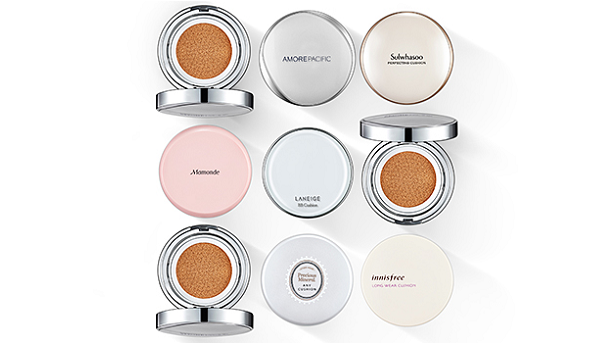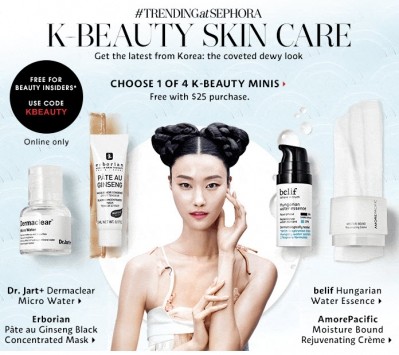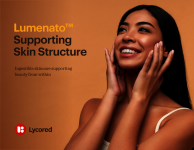What’s next in the K-Beauty boom?

As the K-Beauty boom continues to have a strong presence in Korea’s cosmetics and beauty industry, Cosmetics Design Asia spoke to Nicole Fall, Founder of Asian Consumer Intelligence to find out how K-beauty has captured the appeal of consumers and what we can expect to see in the future for this hot trend that has spread throughout Asia-Pacific (APAC).
Although K-Beauty has made its mark internationally, “the impact is still largely Asian-focused”, said Fall. “Particularly within Asia, there has been a proliferation of both new brands and new products, launching in answer to this new demand.”
This growth has led to “more products launch almost weekly in and outside of Korea”, Fall added.
Future Trends
As K-Beauty continues to rise in popularity, the focus now turns to how this power sector can continue its success and evolve to meet changing consumer attitudes and demands.
Fall notes that there are five key trends developing that look set to keep the K-Beauty boom relevant and appealing.
1. Middle class demographic
“The first is the emergence of the middle class in developing countries in Asia, which have more disposable income than ever before,” said Fall. “Beauty is a high-interest category and I believe that this emerging affluent demographic will become more interested in buying personal care products as well as products that appear to address Asian skincare concerns.”
As skin-whitening becomes a dominant force in the Asia market, Fall emphasised that this is one sector helping to leverage the success of the K-beauty boom: “[There] is the interest in whitening and the perception that ‘Asian brands’ address this need better; providing more scope for K-Beauty brands”.
2. Private labels
As the mass market evolves from one that was “dominated by international brands from well-known MNCs”, this has enabled private-label products and retail drugstore brands to take a share of the market.
“[Private-label products and retail drugstore brands] not only offer quality ingredients at affordable price points but also evolve consumers’ daily beauty routines through more steps,” said Fall.
3. Skin care regimes
One key development in the Asian market is the sophisticated skin care regimes that more and more women are adopting in a bid to achieve better results.
“I’ve seen it myself in Malaysia, where brands are shifting from three steps - cleanse, tone and moisturise - to multiple steps, say four to five. In response, some women appear willing to build additional stages into their skincare regimes. So there appears to be future growth based on developing more private label ranges and through evolution from existing regimens,” Fall noted.
4. Maximising digital potential
As retailers are increasingly seeking ways to pair the offline brick-and-mortar experience with digital convenience, consumers are placing less emphasis on touching and feeling products before purchasing them.
“Future growth areas include the development of channels that seamlessly integrate the desire for consumers to touch their products before purchasing online. This goes beyond showrooming and into the area of merging analogue with digital touch points within stores and online,” said Fall.
“In China, some consumers do not even need the tactile aspect of shopping as they are so digitally advanced that convenience trumps tactile product evaluation,” added Fall.
5. Essence category
The K-beauty boom is also expected to help somewhat untapped areas of the APAC cosmetics, beauty and personal industry lead the global marketplace.
“I believe that the growth of the essence category is nascent. While it’s common in more developed markets in Asia to pat on lotions and essences into the skin to prepare for next steps, this concept is still relatively unexplored in Western markets such as the US and Europe,” Fall went on to say.
“Through education, there could be an opportunity to develop first step essences as a possible category,” Fall concluded.
Nicole Fall is Co-Founder of Asian Consumer Intelligence and will host a session entitled Decoding the future of K-Beauty on 9 November 2016 at in-cosmetics Asia in Bangkok, Thailand, which is held between 8-10 November 2016.









![Clariant has underscored the importance of localisation strategies and distribution capabilities in China with beauty trends evolving at a rapid pace. [Getty Images]](/var/wrbm_gb_food_pharma/storage/images/_aliases/wrbm_tiny/publications/cosmetics/cosmeticsdesign-asia.com/article/2024/04/16/clariant-emphasises-importance-of-localisation-in-the-era-of-viral-trends/17327969-1-eng-GB/Clariant-emphasises-importance-of-localisation-in-the-era-of-viral-trends.jpg)

![We dive into our most-read stories on formulation and science. [Getty Images]](/var/wrbm_gb_food_pharma/storage/images/_aliases/wrbm_tiny/publications/cosmetics/cosmeticsdesign-asia.com/headlines/formulation-science/skin-science-latest-stories-on-cosmetics-science-and-formulation/17334719-1-eng-GB/Skin-science-Latest-stories-on-cosmetics-science-and-formulation.jpg)

![Shopee says Vietnam has become a key market for K-beauty brands. [Getty Images]](/var/wrbm_gb_food_pharma/storage/images/_aliases/wrbm_tiny/publications/cosmetics/cosmeticsdesign-asia.com/headlines/market-trends/shopee-k-beauty-orders-to-vietnam-increase-more-than-five-fold-in-the-last-three-years/17319014-1-eng-GB/Shopee-K-beauty-orders-to-Vietnam-increase-more-than-five-fold-in-the-last-three-years.jpg)
![[Getty Images]](/var/wrbm_gb_food_pharma/storage/images/_aliases/wrbm_tiny/publications/cosmetics/cosmeticsdesign-asia.com/headlines/formulation-science/chinese-researchers-identify-igf2-in-oral-mucosa-as-key-factor-for-scarless-wound-healing/17328122-1-eng-GB/Chinese-researchers-identify-IGF2-in-oral-mucosa-as-key-factor-for-scarless-wound-healing.jpg)
![Th recent trend developments in the APAC beauty market. [Getty Images]](/var/wrbm_gb_food_pharma/storage/images/_aliases/wrbm_tiny/publications/cosmetics/cosmeticsdesign-asia.com/headlines/market-trends/what-s-trending-top-stories-on-apac-beauty-market-and-consumer-insights2/17319701-1-eng-GB/What-s-trending-Top-stories-on-APAC-beauty-market-and-consumer-insights.jpg)
![Native Extracts is seeking opportunities to work with China beauty brands. [Getty Images]](/var/wrbm_gb_food_pharma/storage/images/_aliases/wrbm_tiny/publications/cosmetics/cosmeticsdesign-asia.com/article/2024/04/11/native-extracts-aims-to-collaborate-with-c-beauty-brands-with-advanced-chinese-botanicals/17318852-1-eng-GB/Native-Extracts-aims-to-collaborate-with-C-beauty-brands-with-advanced-Chinese-botanicals.jpg)


